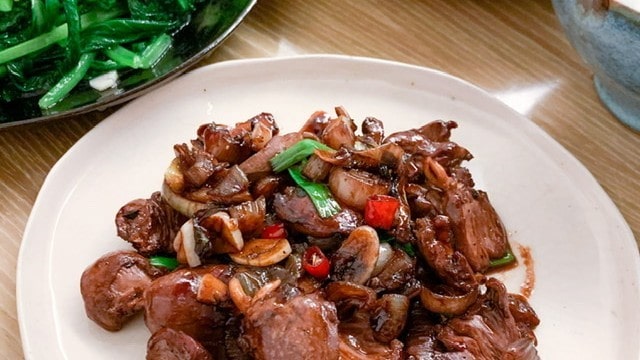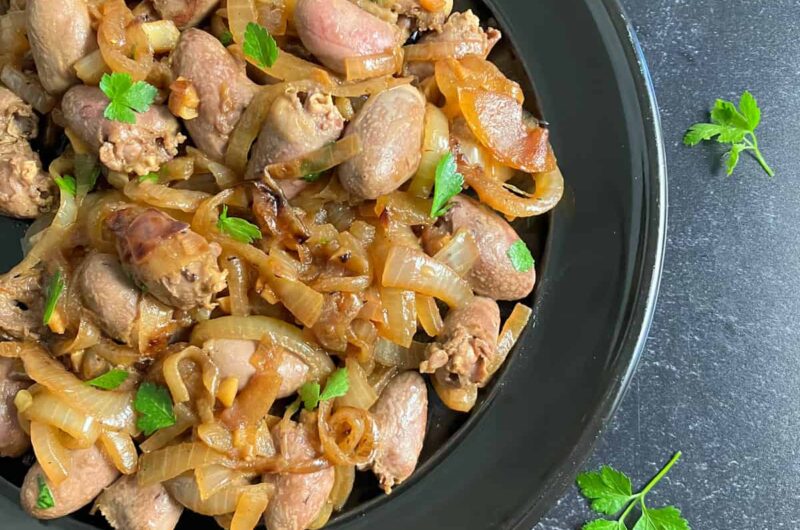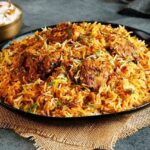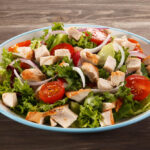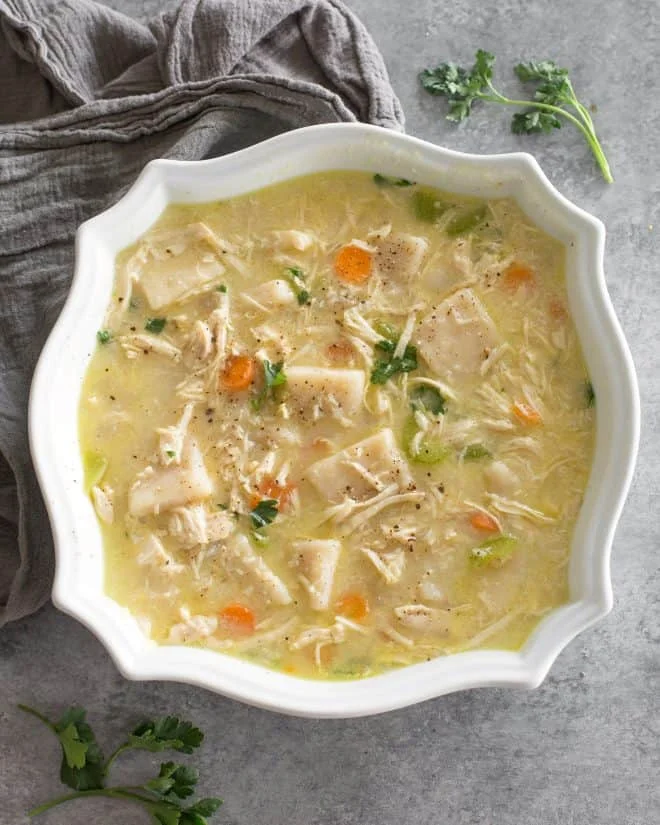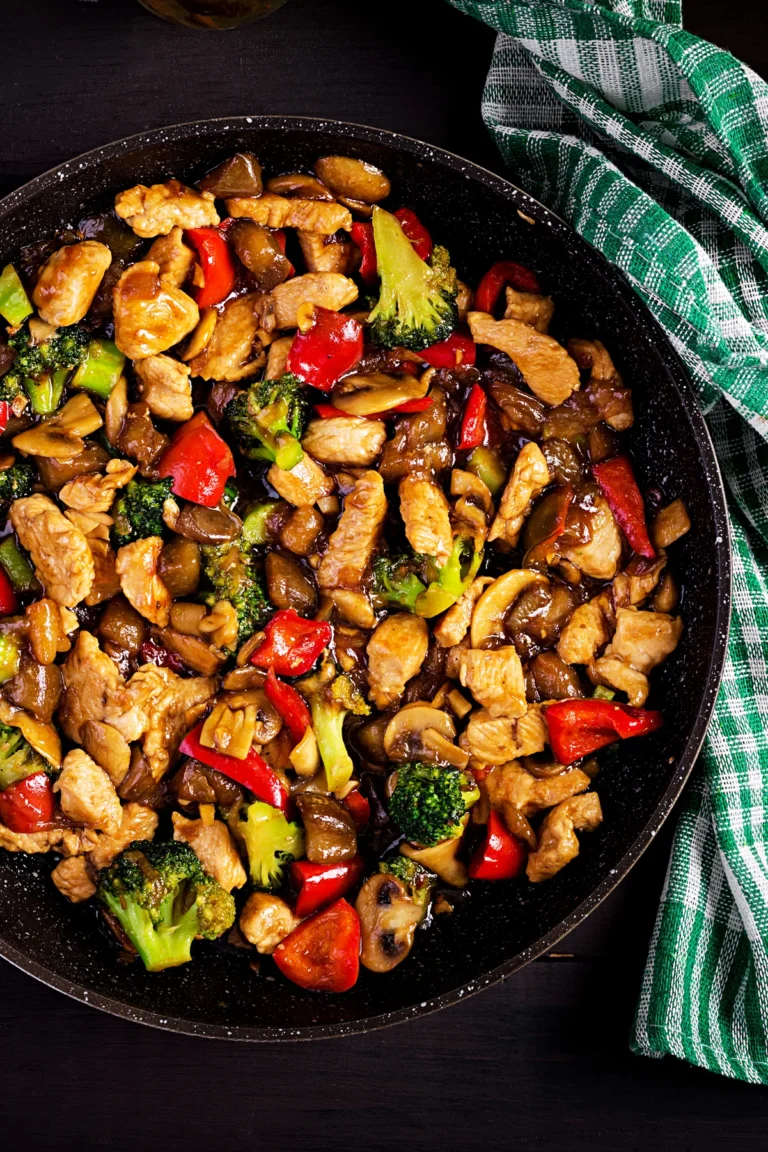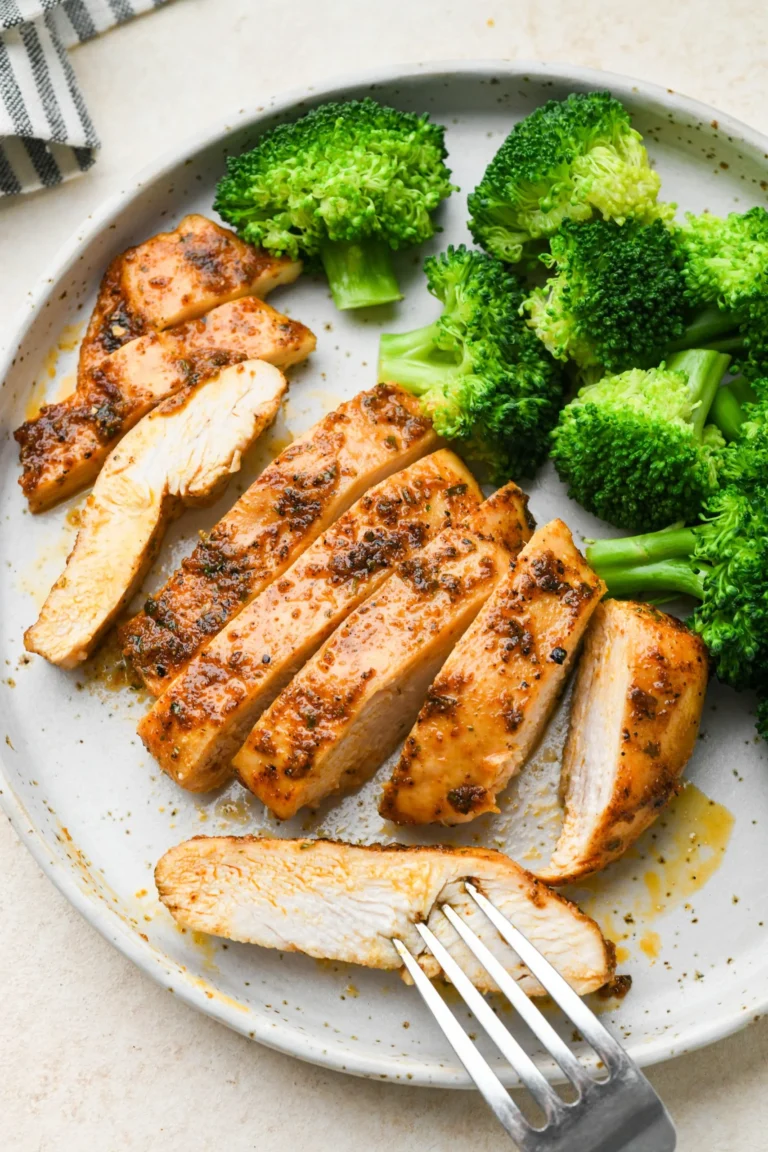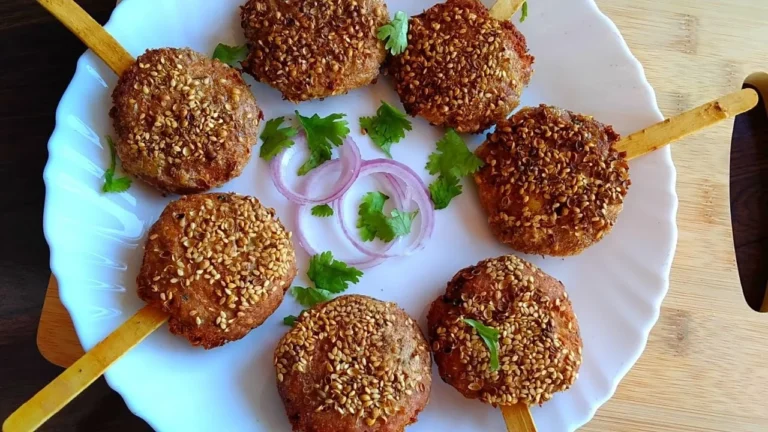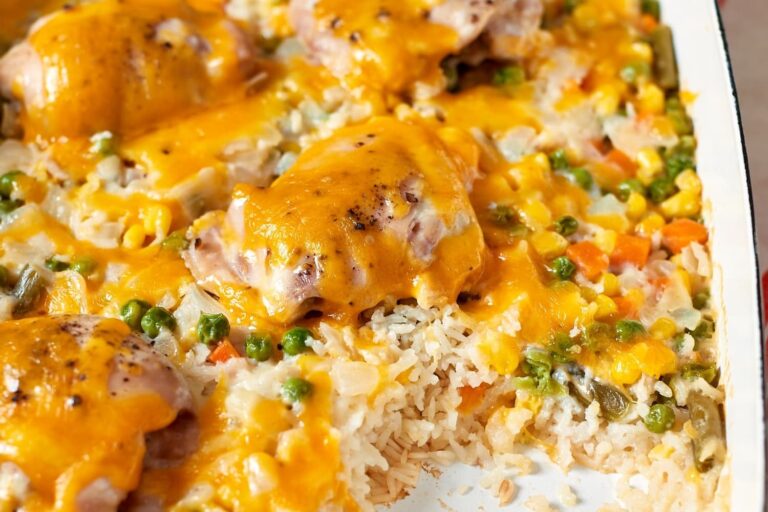Chicken Hearts And Gizzards Recipe
When it comes to exploring the diverse world of poultry cuisine, chicken hearts and gizzards stand out as unique delicacies that have found their way into the culinary traditions of many cultures around the globe. These two edible offal parts are not only rich in flavor but also offer distinct textures that add depth and character to various dishes. In this article, we delve into the fascinating realm of chicken hearts and gizzards, exploring their culinary significance, nutritional value, and frequently asked questions.
Contents
- 1 Culinary Significance: From Humble Beginnings to Gourmet Delights
- 2 Texture and Flavor Profile: A Palatable Adventure
- 3 Cultural Diversity: From Asia to South America
- 4 Nutritional Value: A Protein-Packed Option
- 5 Chicken Hearts And Gizzards Recipe
- 6 Nutritional Content
- 7 FAQs About Chicken Hearts and Gizzards
- 8 Can Chicken Hearts and Gizzards be Used in a Chicken Pastil Recipe?
- 9 Can I Use Chicken Hearts and Gizzards in a Chicken Musubi Recipe?
- 10 Conclusion
Culinary Significance: From Humble Beginnings to Gourmet Delights
Chicken hearts and gizzards were often overlooked in the past, deemed as less desirable parts of the bird. However, over time, their culinary potential has been recognized and celebrated across different cultures. These delicacies have been integrated into a wide range of dishes, from street food offerings to gourmet restaurant menus.
Texture and Flavor Profile: A Palatable Adventure
Chicken hearts and gizzards boast distinct textures and flavors that set them apart from other cuts of meat. Hearts have a tender yet slightly firm texture, offering a satisfying bite. Gizzards, on the other hand, are tougher and chewier, requiring skillful cooking techniques to achieve the desired tenderness. The flavors of these offal parts are often more intense than traditional chicken cuts, offering a rich, savory taste that pairs well with various seasonings and marinades.
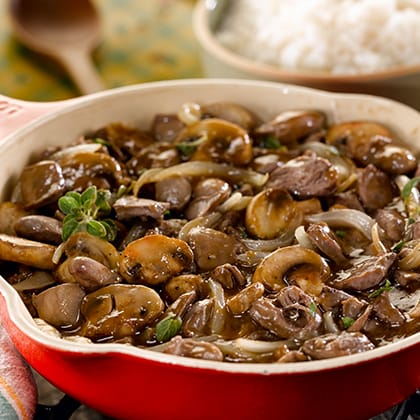
Cultural Diversity: From Asia to South America
Chicken hearts and gizzards have found their way into the culinary repertoires of numerous cultures. In Brazilian churrascarias, grilled chicken hearts are served as succulent skewers, while Asian cuisine features them in stir-fries and soups. These dishes reflect the versatility of these offal parts and how they can be adapted to suit different culinary traditions.
Nutritional Value: A Protein-Packed Option
Beyond their culinary appeal, chicken hearts and gizzards also offer notable nutritional benefits. Both are excellent sources of protein, crucial for muscle growth and repair. They are also rich in essential nutrients like iron, zinc, and B vitamins, contributing to overall health and vitality.
Chicken Hearts And Gizzards Recipe
4
servings15
20
minutes540
Ingredients
1 pound chicken hearts
1 pound chicken gizzards
2 tablespoons olive oil or cooking oil of your choice
1 onion, finely chopped
2 cloves garlic, minced
1 teaspoon paprika
1/2 teaspoon cumin
Salt and pepper to taste
Chopped fresh parsley for garnish (optional)
Directions
- Wash the chicken hearts and gizzards thoroughly under cold running water. Trim any excess fat or membranes. Pat them dry with paper towels.
- Heat the oil in a large skillet or frying pan over medium heat. Add the chopped onion and sauté until it becomes translucent, about 2-3 minutes.
- Add the minced garlic and cook for an additional 30 seconds until fragrant.
- Add the chicken hearts and gizzards to the skillet. Cook for about 5-7 minutes, stirring occasionally, until they are browned on all sides.
- Sprinkle the paprika, cumin, salt, and pepper over the hearts and gizzards. Mix well to evenly coat the organs with the spices.
- Reduce the heat to low and cover the skillet. Let the chicken hearts and gizzards simmer for about 15-20 minutes. The cooking time may vary depending on the size of the organs. Make sure they are cooked through but still tender.
- Taste the hearts and gizzards and adjust the seasoning if needed, adding more salt or spices according to your preference.
- Once the hearts and gizzards are fully cooked and tender, remove them from the heat.
- Serve the chicken hearts and gizzards hot, garnished with chopped fresh parsley if desired.
- You can serve chicken hearts and gizzards with a side of steamed rice, mashed potatoes, or crusty bread. A simple green salad or sautéed vegetables would also complement the dish well.
Remember, cooking times may vary based on the size and freshness of the organs. It’s important to ensure that they are fully cooked before serving. Enjoy your flavorful chicken hearts and gizzards!
Nutritional Content
Chicken Hearts:
- Calories: Approximately 135 kcal
- Protein: Approximately 24 g
- Fat: Approximately 4 g
- Carbohydrates: Approximately 0 g
- Fiber: Approximately 0 g
- Cholesterol: Approximately 375 mg
- Iron: Approximately 6 mg
- Vitamin B12: Approximately 3.6 mcg
- Zinc: Approximately 2.3 mg
- Selenium: Approximately 37 mcg
Chicken Gizzards:
- Calories: Approximately 154 kcal
- Protein: Approximately 25 g
- Fat: Approximately 4 g
- Carbohydrates: Approximately 2 g
- Fiber: Approximately 0 g
- Cholesterol: Approximately 536 mg
- Iron: Approximately 4 mg
- Vitamin B12: Approximately 3.6 mcg
- Zinc: Approximately 2.6 mg
- Selenium: Approximately 29 mcg
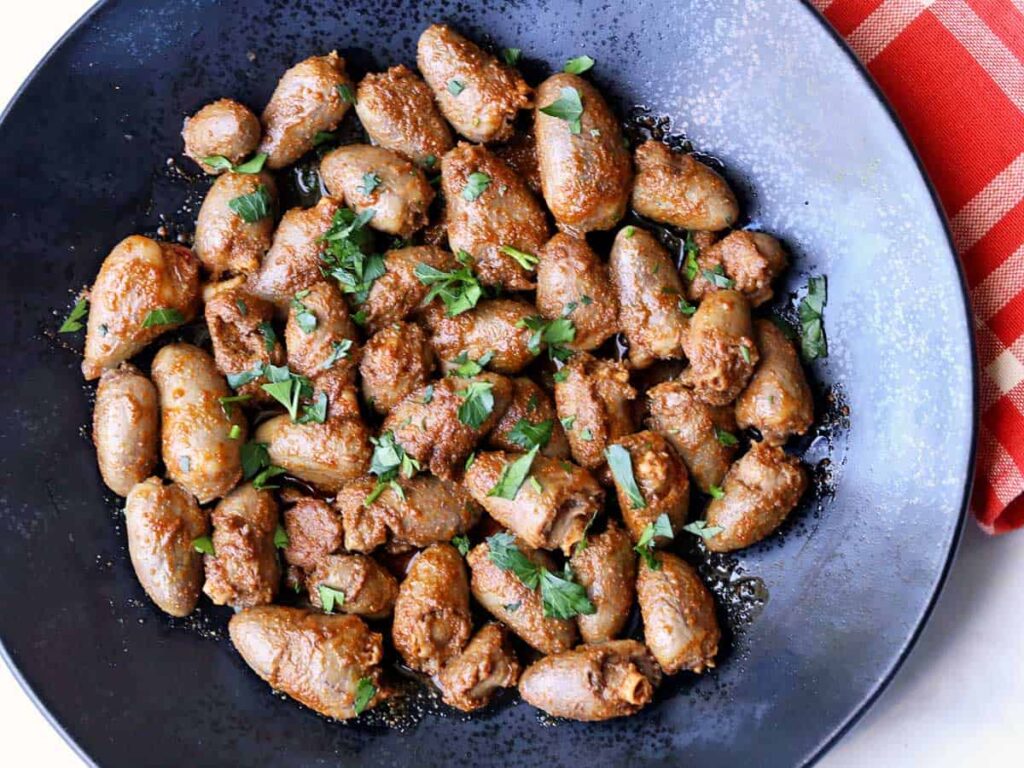
FAQs About Chicken Hearts and Gizzards
1. Are chicken hearts and gizzards safe to eat?
Yes, when cooked properly, chicken hearts and gizzards are safe to consume. Ensure they are cooked to the recommended internal temperature to avoid any risks of foodborne illness.
2. How can I tenderise gizzards?
Gizzards can be tough, but marinating and slow cooking are common methods to achieve tenderness. Acidic marinades or using cooking methods like braising or pressure cooking can help break down their fibres.
3. Do these offal parts have a strong taste?
Chicken hearts and gizzards do have a more robust flavour compared to other chicken cuts. However, their taste is not overpowering, and it can be balanced and enhanced with various seasonings and cooking techniques.
4. Can I substitute chicken hearts and gizzards in recipes?
While these offal parts have unique textures and flavours, you can experiment with other cuts of meat in recipes if you’re not a fan of hearts and gizzards. However, their distinct characteristics contribute to the uniqueness of certain dishes.
5. What cultural dishes feature chicken hearts and gizzards prominently?
In Brazilian cuisine, “Espetinho de Coração” (grilled chicken hearts skewers) is a popular street food. In Asian cuisine, you can find them in dishes like “Yakitori” in Japan and “Adobo” in the Philippines.
Can Chicken Hearts and Gizzards be Used in a Chicken Pastil Recipe?
Chicken hearts and gizzards can undoubtedly provide a unique twist to your chicken pastil recipe. These flavorful and tender delicacies add a delightful texture, enhancing the overall taste. Incorporating them into your traditional recipe introduces an exciting variation that could be a delightful surprise for your taste buds. Experience a tantalizing fusion of flavors with chicken hearts and gizzards in your chicken pastil recipe.
Can I Use Chicken Hearts and Gizzards in a Chicken Musubi Recipe?
Using chicken hearts and gizzards in a chicken musubi recipe adds a delightful twist to this popular dish. These organ meats offer a unique texture and rich flavor, complementing the traditional ingredients. Be sure to cook them thoroughly alongside the chicken, and prepare to savor an elevated and delicious chicken musubi experience.
Conclusion
In conclusion, chicken hearts and gizzards have come a long way from being overlooked parts of the chicken to becoming celebrated culinary delights. Their textures, flavors, and nutritional value make them intriguing additions to a variety of dishes across cultures. So, if you’re an adventurous eater seeking unique flavors and textures, consider exploring the world of chicken hearts and gizzards through the lens of different culinary traditions.
